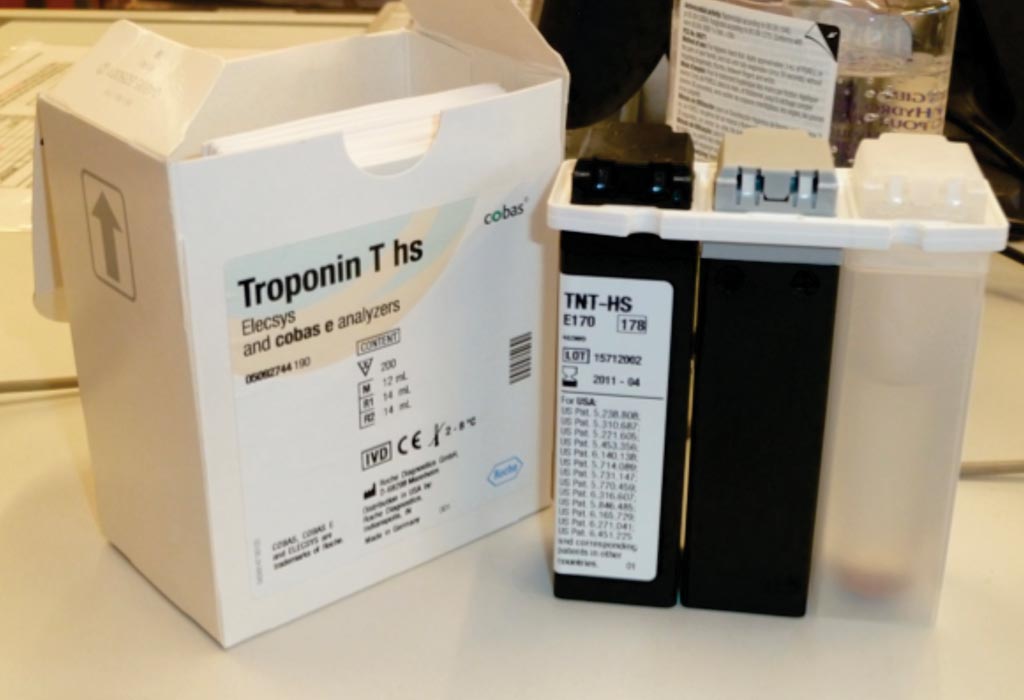Cardiac Infarction Diagnosed with Sensitive Method
By LabMedica International staff writers
Posted on 24 Jun 2018
Chest pain is one of the most common reasons people seek emergency medical care. To determine if a person has suffered a cardiac infarction, symptoms are assessed partly on the basis of chest pain and partly with an electrocardiogram taken to detect typical changes consistent with a heart attack.Posted on 24 Jun 2018
In addition, a blood test is taken to measure levels of the protein troponin or else high-sensitive troponin T, both of which are biomarkers for heart damage. Elevated troponin values indicate that cells in parts of the heart have died from lack of oxygen after a heart attack impeded the flow of blood.

Image: The Elecsys high-sensitivity cardiac troponin T (hs-cTnT ) assay (Photo courtesy of Roche Diagnostics).
Scientists at the Sahlgrenska Academy (Gothenburg, Sweden) and their colleagues carried out a study that encompassed all patients who suffered heart attacks in Sweden during the 2009-2013 period. A total of 87,879 people were studied, of which 40,746 were diagnosed using high-sensitive troponin T (hs-cTnT) and 47,133 were tested using conventional troponin (cTn). The groups were similar in terms of gender and age distribution and other types of illness in the patients' history.
From 2009 to 2012, the current iteration of the hs-cTnT assay was the only higher-precision method used in Sweden. For this assay, the lowest concentration measurable with a 10% coefficient of variation is 13 ng/L, the limit of detection is 5 ng/L and the 99th percentile value among healthy controls is 14 ng/L. However, some hospitals in Sweden initially used higher diagnostic cutoffs, in the range of 30 to 40 ng/L, for myocardial infarction (MI).
The investigators showed that the more sensitive marker, hs-cTnT, detected 5% more heart attacks, although with no impact on survival. On the other hand, the number of heart attack victims suffering a relapse was 11% lower in that group. When high-sensitive troponin T started being introduced in 2009, there was concern about spending of health care resources in general and that interventions and treatments for the group of patients with suspected heart attacks would increase.
The authors concluded that in a nationwide cohort study comprising 87,879 patients with a first MI during the years when 73% of acute care hospitals in Sweden transitioned from cTn to hs-cTnT, the introduction of the hs-cTnT assay led to a decline in the annual incidence of MI, with no survival benefit, but with a reduced risk of reinfarction, alongside an increase in coronary angiographies and revascularizations. The study was published in the June 2018 issue of the Journal of the American College of Cardiology.
Related Links:
Sahlgrenska Academy














